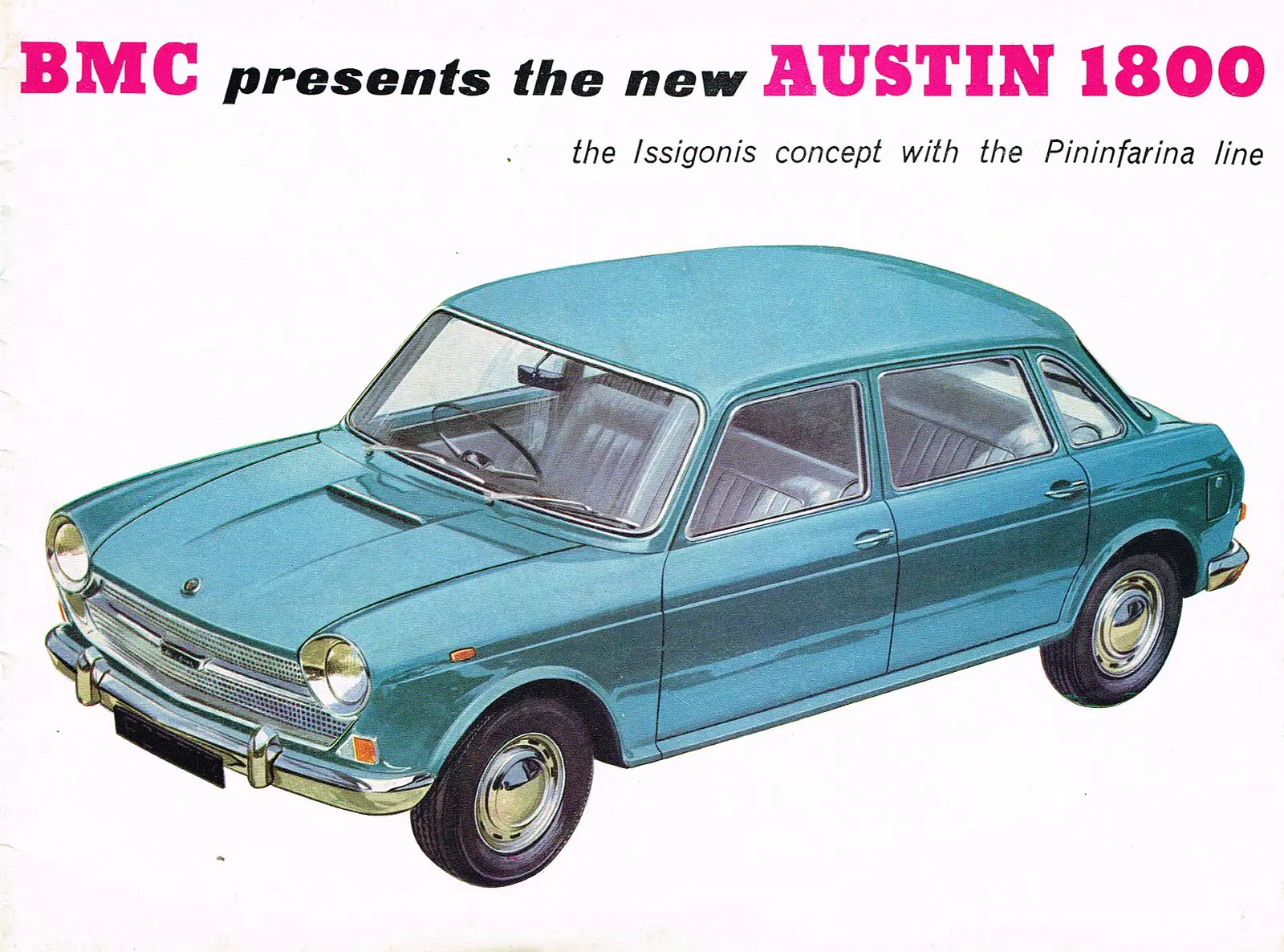THE AUSTIN 1800: A CELEBRATION
23 December 2021
Any visitor to the 1964 Earls Court Motor Show looking for reasonably priced but imposing four-cylinder transport had a choice of five models. For those who wanted a quasi American appearance, there was the Ford Corsair, the Singer Vogue Series III and the Vauxhall Victor FC. For those who sought traditionalism, there was the Wolseley 16/60. And BMC also offered the new Austin 1800, one of the most remarkable and underrated of Alec Issigonis’s creations.
The 1800 was the British Motor Corporation’s third front-wheel-drive car after the Mini and the ADO15. Motor very accurately referred to it as having the space of a 3-litre car, the performance of a 2-litre car and the running costs of a 1.5-litre car. The Austin was shorter than a Ford Cortina yet offered more cabin space than a Zodiac Mk. III. Furthermore, the 1800 also provided an incredibly strong sub-frame-less hull and a ride quality superior to cars costing twice the De Luxe’s £808 14s 7d price tag.
The Landcrab, as the 1800, was nicknamed, was declared the second Car of The Year (the Rover 2000 was the first), and Autocar described it as ‘one of the most important cars in the world of motoring’. However, sales did not reach BMC’s expectations, for one problem was that the Austin seemed to occupy a strange marketing netherworld between the A60 Cambridge and the A110 Westminster.

Another issue was the styling, which many potential buyers regarded as far too minimalist compared with Ford, Rootes and Vauxhall products. BMC claimed the 1800 resulted from a collaboration between Pininfarina and Issigonis, but the latter was mainly responsible for its lines. He also once observed, “I’ve always thought it a waste of time and effort to build two dozen prototypes and send them all over the world on proving trials”.
And so it should have come as little surprise to Longbridge’s management that the Landcrab suffered from various technical issues, from suspension pipe maladies to engine problems. In addition, the 1800 featured several annoying design faults, and Motor Sport complained:
It is in the low-geared steering, the effort needed for parking, the about-average noise level, the uncontrolled movement of the engine on its ingenious mountings, and minor inconveniences of handbrake and gear change, which combine to give rise to a certain amount of disappointment.
Yet the Austin’s formula was ambitious and farsighted. When the same title subjected the Landcrab to a long term test, they concluded, “Given similar development to the Mini, the Austin 1800 will emerge as one of Britain’s truly great family cars”.
As it transpired, BMC initially focused on badge engineering, with a Morris version making its bow in 1966. The well finished and very agreeable Wolseley 18/85 debuted in the following year. In that same year, Car magazine observed ‘how long BMC can allow the 1800’s shortcomings to prevent it from realising a truly tremendous potential is something for them to decide’.
1968 saw the newly formed British Leyland introduce the Mk. II version, In that same year, Motor described the Landcrab as ‘one of the best medium-priced big cars available anywhere in the world today’. However, the best description of this fascinating machine probably comes from Sir Alec when he saw the 1800 at the 1965 London Motor Show: ‘that car is way out ahead of them all’. Today, many enthusiasts would agree with that statement.
